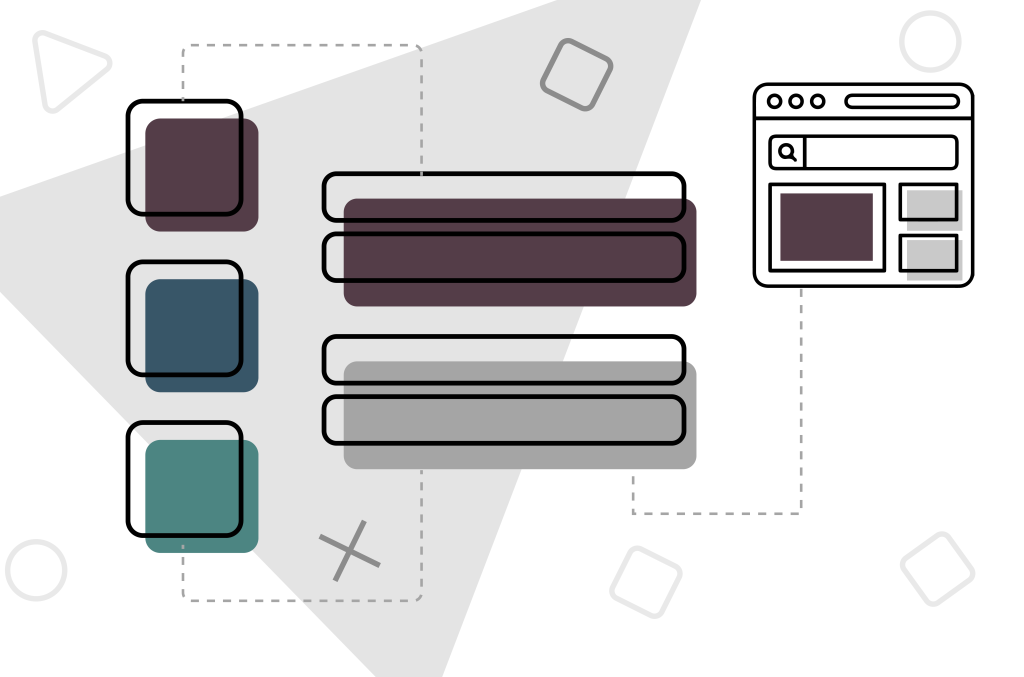A Design System organizes various disparate components to enable a team to design, realize, and develop a product. The elements of this design system can be used and reused to build a wide range of products and help facilitate designers’ skills and expertise. However, when choosing a design system, there are many elements to consider. And while many believe design systems are critical, some within the industry are divided on their use.
Below we’ve highlighted the pros and cons of using design systems and attempted to overview how design systems work in the real world.
What is a Design System?
Essentially, a design system is a collection of elements that can build a product or service, or piece of software. A design system can evolve and adapt to meet new requirements while providing designers with useful UI and UX pieces to serve as building blocks for the finished product. Equally, a design system can guide designers’ design process from creation to implementation to delivery.
Benefits of Using a Design System
- Brand Recognition: A design system that includes a collection of parts that reflect the company’s values helps to maintain brand recognition. In addition, designers and developers can use these assets and components to create instantly recognizable designs and connect to the company. Design systems may also provide designers with a standardized set of colors, shapes, and typography that can serve as the essential building blocks of their creations.
- Saves Time: A comprehensive Design system allows teams to free up design resources and save time. In addition, design teams can use the components to structure and alter their products, software, pages, and apps. As a result, design teams don’t need to spend so much time creating assets from scratch, and with this extra free time, they can work on more complex and vital design issues. Ultimately, this will result in a better user experience.
- Enables Design to Scale: As well as saving time, design systems improve the scalability of design teams and their designs. Team members will have to spend less time styling everything from the ground up and will be able to focus on maximizing the potential of existing components. Some design systems will also provide a roadmap. This level of guidance will help designers and developers anticipate their needs as they scale, hopefully making the whole process easier.
- Developers and Designers Have a Common Language: Design systems give developers and designers a common visual language to use. As a result, design hand-offs are a lot easier because they will appreciate the bigger picture and understand how one component fits into the creation of the whole design. In addition, communication is an integral part of any design process, and design systems are usually a reliable way to improve collaboration within teams and across departments.
- More accessible to Onboard New Developers or Designers: Design systems ensure that you gather the essential and relevant information in one place. For example, if you need to onboard new designers or developers, a design system can smoothly help the process. System onboarding can be quick and more effective with all the relevant information included in the design.
Drawbacks of Using a Design System
There are quite a few pros to having a design system, but it is also essential to consider the downsides.
- Resource Intensive: One of the most glaring drawbacks to creating a design system that serves its purpose is a resource-intensive process. You can invest quite a lot of design and development resources into a design system before receiving any tangible progress. This investment is usually worth it in the long run, but if you have a small team or low resources or need to create something quickly, a design system can be a hindrance rather than a helpful tool.
- Educating Developers and Designers: It may be challenging to get all your designers and developers to use a design system. Many of them will have been completing projects without a design system. Therefore, it can take some time to educate everyone. For some companies and teams, this may involve a cultural shift and a level of patience.
 Understanding Design Systems
Understanding Design Systems
The purpose of a design system is to facilitate the team’s work. Therefore, design systems are often created in collaboration with an entire product team. Ideally, this means that developers, designers, product managers, programmers, and engineers will all say how a design system looks and feels. This is important as it is a system that hopefully aids everyone’s progress regardless of their place within the team. Most design systems are based on a standard setup. So first, there will be top-level navigation showing the main system categories, including Design, Code, Components, Branding, etc. Then within these main categories, there will be sub-navigation levels that include Typography, Color, Components, Forms, Guidelines, etc.
Ultimately, when design systems are used properly, they should serve as a single source of truth for the design team and ensure that everyone who works on the product or project is always on the same page. In addition, they help to emphasize design principles, different brand identity, and language and provide all team members with the components and tools they need to succeed.
Want to learn more about design systems? Feel free to contact our design experts here at Radiant.
Nothing found.